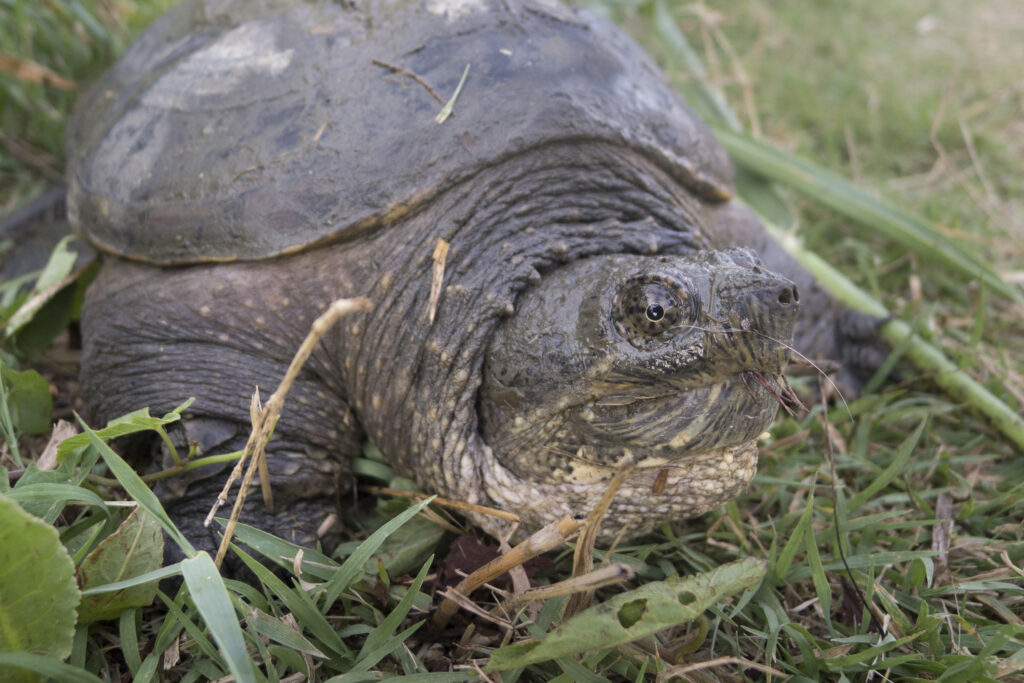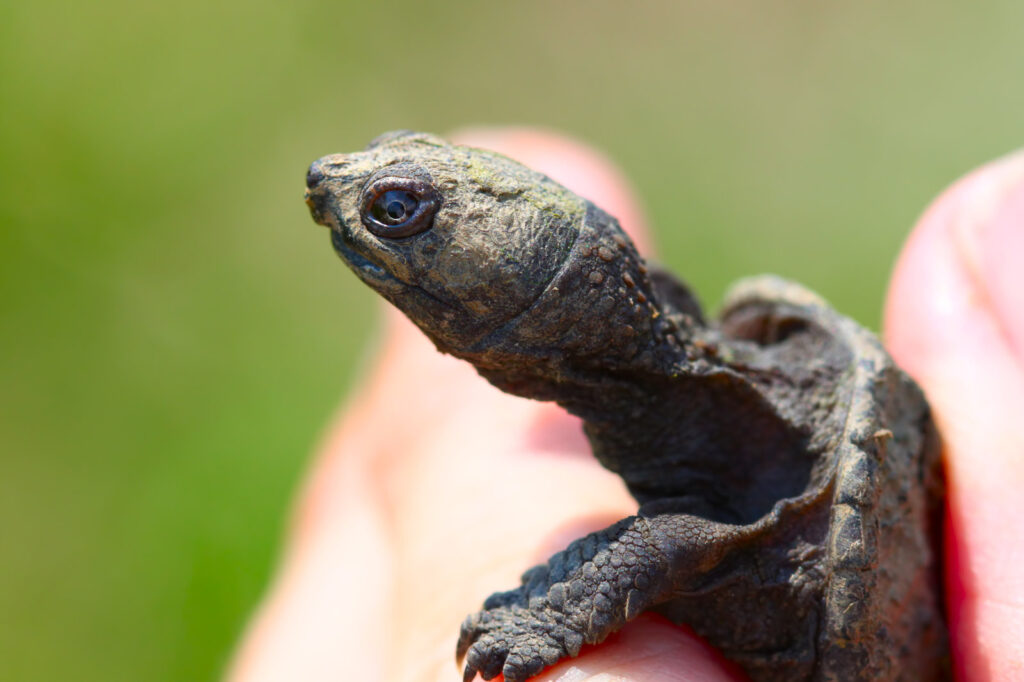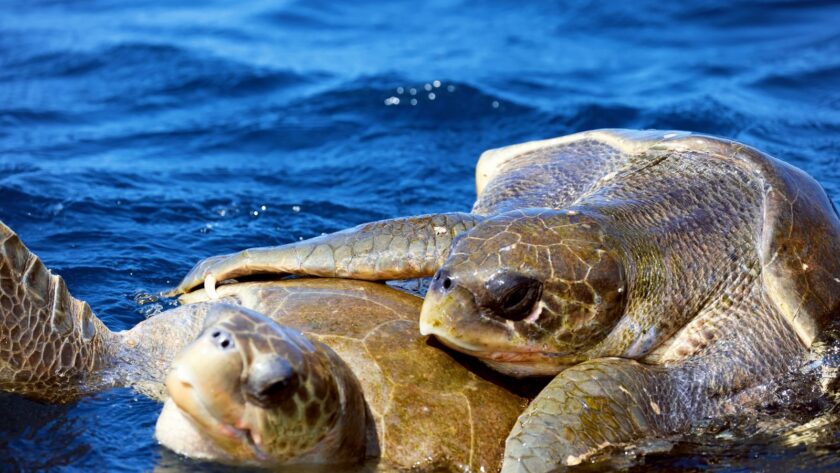Are you curious about turtles? Do you wonder if they are all aquatic? You’re in luck! In this article, we’ll discuss whether or not this is a fact or a myth.
Turtles come in many sizes and shapes, and they inhabit various habitats throughout the world. They have adapted to their environment over millions of years, so it’s no surprise that some turtles are aquatic while others live on land. We’ll examine the different types of turtles and what factors affect their habitats to learn more about these ancient creatures.
Additionally, we’ll explore how humans impact turtle populations and what conservation efforts are helping them thrive today. Let’s dive into the fascinating world of turtles!
Table of Contents
Overview of Turtle Species

Did you know that there are hundreds of different species of turtles living all around the world?
From tropical regions to deserts and arctic tundras, these ancient reptiles have adapted to a variety of habitats. The size and shape of the turtle’s shell, also known as carapace, is one way in which species can be classified. Turtles come in a range of sizes from the tiny bog turtle to the giant leatherback sea turtle.
Shell anatomy can also vary significantly; for example, some turtles have domed shells while others are highly flattened. Turtles’ hibernation habits are another distinguishing characteristic among species; many will dig underground burrows or find caves to hibernate during winter months but others may remain active year-round.
Some like painted turtles live in northern climates where ice covers their pond habitat for several months each year and they must bury themselves beneath the mud at the bottom until warmer temperatures return.
All types of turtles face threats from human activities such as poaching, habitat destruction, pollution, water loss due to climate change, and disease outbreaks caused by invasive species.
Aquatic Turtles
You’ll be amazed to learn what these amazing creatures can do in the water! Aquatic turtles are amphibious animals that spend most of their time submerged in water.
Not only do they swim, but they also dive and search for food on the bottom of a body of water. They feed mainly on aquatic plants, insects, and fish depending on their species. While some aquatic turtles have dietary habits that include vegetation, others may rely solely on meat-based diets.
Temperature requirements are also very important for aquatic turtles; their body temperature must remain stable in order to stay healthy and active. Additionally, they need warm temperatures to help them digest their food properly.
As you can see, aquatic turtles have specialized needs that must be met in order for them to thrive in an aquatic environment.
Semi-Aquatic Turtles
Semi-aquatic turtles have adapted to both land and water, living a unique lifestyle that’s a blend of the two! These creatures are found in many different kinds of habitats, including brackish marshes, swamps, rivers, lakes, ponds and even some beaches. They are also known as terrapins or sea turtles depending on their location.
Semi-aquatic turtles typically spend most of their time in shallow waters where they can forage for food and sunbathe in the warmer months. However, they will often venture onto land to lay eggs or bask in the sun when temperatures drop too low.
Semi-aquatic turtles need access to both land and water to be healthy. In captivity it’s important to provide them with an environment that contains both dry areas like rocks and logs as well as pools of water filled with aquatic vegetation. This will allow them to carry out all their natural behaviors such as basking, foraging and nesting while keeping them safe from predators.
It’s also important to make sure the temperature is kept at an optimal level so that the turtle doesn’t become stressed due to extreme temperatures either underwater or on land.
Land Turtles

Let’s start by discussing the two main types of land turtles: Box Turtles and Tortoises.
Box Turtles look similar to other turtles, but they have a hinged shell that makes them easily identifiable.
The Tortoise is another type of land turtle that has a more rounded shell and usually lives longer than its counterparts.
Box Turtles
You can easily identify box turtles from other species by their hinged shell, which allows them to partially close up for protection.
Box turtles are found in a variety of habitats, including grasslands, wetlands, and forests.
They feed on insects such as worms and beetles, as well as fruits and vegetables.
In captivity, they can also be given cat food or dog food that’s been specifically formulated for reptiles.
Box turtle lifespan varies greatly depending on the species and environment but generally ranges from 20-50 years if cared for properly.
When it comes to diet, box turtles require a balanced mix of protein and plant matter to stay healthy.
For optimal nutrition, provide your pet with a variety of fresh fruits and vegetables along with live insects such as mealworms or crickets.
A small portion of commercial reptile pellet foods may also be offered but shouldn’t make up the majority of their diet.
With proper care and nutrition, you can expect your box turtle to live a long lifetime full of joy!
Tortoises
Moving on from Box Turtles, let’s focus our attention to Tortoises. A tortoise is a type of turtle that is known for its large and heavy body, strong limbs, and long life span. As an animal of the reptile family, it’s important to understand the anatomy of a tortoise in order to accurately answer the question at hand: are all turtles aquatic?
Tortoises have sturdy shells called carapaces which are designed to protect them from predators and provide them with shelter. The shell-shape varies depending on the species but they can usually be identified by their domed shape. They also have relatively short neck and legs compared to other turtles.
They are herbivores who feed off plants like grasses, flowers, cacti, and fruits as well as small invertebrates like snails or slugs, depending on their environment. This diet provides them with enough hydration that they can live without access to water bodies. However, some species prefer shallow rivers or ponds for bathing or drinking purposes.
Thus showing that not all turtles need an aquatic environment for survival!
Factors Affecting Their Habitats
Your habitat can have a drastic effect on turtles, so it’s important to consider the factors that might influence where they live.
Habitat destruction is one of the greatest threats to turtle populations worldwide. This includes things like deforestation, urban sprawl, and pollution, which can significantly reduce or even eliminate areas suitable for turtles to inhabit.
Additionally, climate change has caused sea levels to rise and altered weather patterns in many regions, making it harder for turtles to find food and suitable habitats.
The availability of food sources is also an essential factor in determining which habitats are most suitable for turtles. Different species of turtles may require different types of food sources such as aquatic plants or small prey animals like fish or insects. So, the availability of these resources will determine whether a particular habitat is suited for them.
The presence of predators such as birds or mammals can also affect turtle habitats by reducing their available range or preventing them from accessing certain areas within their habitat altogether.
Human Impact on Turtles
Humans have a huge impact on turtles, which can range from the literal ‘tip of the iceberg’ to far-reaching consequences.
Pollution from industrial and agricultural activities has had a major impact on water quality, not just for turtles but all aquatic life. Excessive nutrient runoff from fertilizers and other materials cause algal blooms that deplete oxygen levels in the water, making it difficult for turtles to survive.
On land, habitat destruction due to urbanization is another serious issue. Not only does this reduce available nesting sites for turtle eggs, but it also fragments populations of turtles, preventing them from being able to migrate effectively between different habitats.
Climate change caused by human activity is yet another factor impacting turtle populations around the world. Rising temperatures can affect the sex ratio of hatchlings as well as increasing mortality rates among young turtles who are unable to adapt quickly enough to changing conditions.
Sea level rise also poses a risk since many sea turtle species nest on coastal beaches; rising waters can flood nests and prevent successful hatching or allow predators greater access to vulnerable eggs and hatchlings.
Humans must take action now if we’re going to ensure healthy populations of turtles for future generations!
Conservation Efforts
You can help protect turtles by supporting conservation efforts to reduce our impact on the environment and create safe habitats for them.
Conservation initiatives include advocating for stricter laws against turtle poaching, reducing water pollution, and protecting nesting sites from destruction.
Turtle poaching has become a huge problem in many areas, as poachers often target turtles for their meat or shells.
Reducing water pollution is another key component of turtle conservation; polluted waters can be dangerous to turtles and other forms of aquatic life.
Protecting nesting sites from destruction is also an important step; if these areas are destroyed, it can lead to the loss of essential habitat for turtles.
By supporting these initiatives through donations or volunteering your time, you can help ensure that future generations will be able to enjoy the beauty of these creatures for years to come!
Frequently Asked Questions
How long do turtles live?
Greetings! You’re probably wondering about the life expectancy of turtles. Well, you’ve come to the right place.
Turtles are fascinating creatures with an impressive anatomy and unique behaviors that can help them thrive in their environments.
On average, turtles live for around 30 to 40 years when they’re in captivity. However, some species like sea turtles might live up to 80 or 90 years in the wild due to their special adaptations and ability to survive better than other animals.
With proper care and attention, these shelled friends can make wonderful companions who will bring joy into your life for many years!
What is the best way to care for a pet turtle?
Caring for a pet turtle is an incredibly rewarding experience. To ensure your turtle is happy and healthy, you must provide it with the right tank setup and habitat.
For smaller turtles, a 10-gallon tank should be sufficient. For larger turtles, you’ll need to invest in a larger tank or outdoor pond. In either case, fill the tank with clean water from a filtered source and make sure to maintain proper filtration levels.
Additionally, make sure to use the correct substrate in the bottom of the tank—such as gravel or sand—and add decorations like rocks or logs that will help your pet feel safe and secure.
Finally, provide plenty of places for your turtle to bask so it can properly regulate its temperature. With these simple steps, you can create an ideal environment for your pet turtle!
What types of food do turtles eat?
You may be surprised to learn that turtles actually have a diverse diet! Not only do they enjoy eating vegetables and fruits, but they also eat protein-rich foods like crickets and worms.
To keep your turtle’s shell healthy, make sure that you feed them a balanced diet consisting of proteins, carbohydrates, and vitamins. Turtles love variety in their diets and will eagerly devour treats such as mealworms or strawberries.
Additionally, it’s important to remember to give them plenty of calcium supplements in order to ensure strong bones and shells. With the right food choices for your pet turtle, you can keep them healthy and happy!
What diseases do turtles commonly contract?
You may not realize it, but turtles can suffer from a wide range of diseases. Commonly, they contract respiratory infections due to poor hygiene and shell health.
To prevent this, make sure your turtle is in an environment with clean water and consistent temperature levels. You should also regularly inspect your pet’s shell for any signs of damage or infection.
If you notice any problems, be sure to take your turtle to the vet immediately for a checkup and diagnosis. By taking care of your turtle’s hygiene and health needs, you can keep them healthy and happy!
Is it legal to keep turtles as pets?
You could have a pet turtle if you wanted to, but it’s important that you know the laws and regulations in your area first.
Keeping a turtle can be an incredibly rewarding experience, as they make great companions and are generally very easy to care for. But before you get one, you need to ensure that your tank setup is sufficient for their needs and that all of the necessary permits or licenses are obtained.
Plus, turtles can live up to 30 years with proper care and attention, so it’s important to consider if this is something you’re ready to commit to long-term.
With the right knowledge and planning, having a pet turtle can be an incredibly enjoyable experience!
Conclusion
You’ve discovered the answer to the question: are all turtles aquatic? The answer is no.
Turtles come in many varieties, from aquatic to semi-aquatic and even land-based species. Factors such as climate change, pollution, and human activity have caused some turtles to become endangered or extinct.
Take the Yangtze giant softshell turtle for example – it’s currently facing extinction due to a combination of factors including habitat loss, water pollution, and overharvesting of eggs by local people.
To ensure that turtles remain around for generations to come, we must work together towards conservation efforts like protecting their habitats and increasing public awareness about the importance of preserving these creatures.


